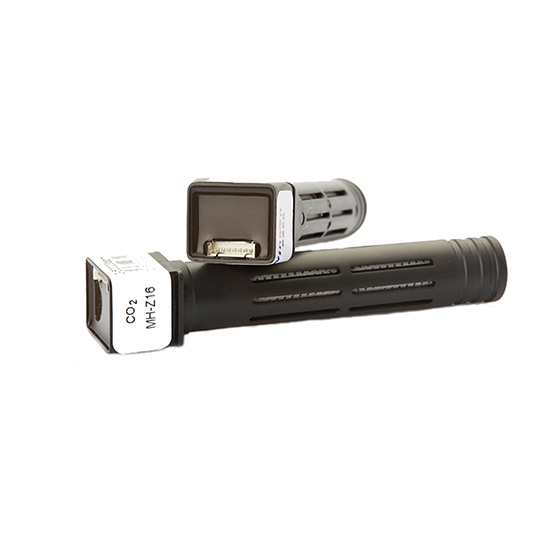What are the Types of Carbon Dioxide Sensor?
A carbon dioxide sensor is a machine used to detect the concentration of carbon dioxide. Carbon dioxide is one of the raw materials for photosynthesis of green plants, and 95% of the dry weight of crops comes from photosynthesis. For those unfamiliar with air quality sensors, choosing the right sensor can be challenging. Today we are going to discuss the types of CO2 sensors and their pros and cons.
Carbon dioxide sensor types fall into three categories:
- Non-dispersive infrared sensor
- Electrochemical sensor
- Metal oxide semiconductor sensor
Non-Dispersive Infrared (NDIR) Sensor
Simply put, NDIR sensors use specific wavelengths of light to measure carbon dioxide levels in the air. Every element on Earth absorbs certain types of light. For example, carrots reflect orange light but absorb all other colors. Because the light is absorbed, it has no chance for our eyes to see. When things are broken down into atoms and molecules, we can determine what kind of light each absorbs, even the light we can't see. Armed with this knowledge, we can use sensors to test whether certain elements are present, and if so, in what quantities.
This is how a CO2 NDIR sensor works: Air will enter the sensor. The sensor will then activate light at one end of the sensor set to one of the CO2 specific wavelengths, usually around 4 microns. The other side will hold a container that will measure how much light reaches the other side. Once the light is activated, any carbon dioxide in the air sample will absorb some of the beam. This reduces the amount of light reaching the other side of the sensor. The amount of light absorbed depends on how much carbon dioxide is present. The more carbon dioxide there is, the more light is absorbed.
Advantage:
- Very durable, some for more than ten years.
- Other substances will not interfere with the reading.
- Works well in the common CO2 range (~1000 ppm).
Shortcoming:
May be affected by humidity and temperature in the long run.
Electrochemical Sensor
Electrochemical carbon dioxide sensors measure electrical current or conductivity to determine how much carbon dioxide is present in the air. When CO2 enters the sensor, it undergoes a chemical reaction within the sensor. When this reaction occurs, the sensor undergoes an electrical change. Depending on the specific type of sensor, the reaction can cause the sensor to receive current, change an existing current, or change the sensor's ability to carry current. The sensor will then use the type and amount of electrical change to determine how much carbon dioxide is present.
Advantage:
Less susceptible to humidity and temperature changes than NDIR or MOS sensor.
Shortcoming:
- Other substances may affect readings.
- Not as durable as NDIR sensors.
- Sensors may "drift" or lose accuracy.
Metal Oxide Semiconductor (MOS) Sensor
The MOS CO2 sensor uses the resistivity of metal compounds to measure the gas content in the air. Resistivity is the ease with which current flows through something. Therefore, materials such as copper, which are used in large quantities in wiring, will have a lower resistance than the rubber used to stop the current flow. Copper is electrified, while rubber resists current flow due to the difference in conductivity.
MOS sensors have a metal strip or film that is exposed to the air you want to test. The strip has a constant current flowing through it. When the target gas comes into contact with the workpiece, it will interact with the metal and change the chemical composition through reduction or oxidation reactions. When this happens, the resistivity or conductivity or metal will change. The type of resistance change, whether it increases or decreases, and the magnitude of this change determines the concentration of the target gas. Depending on the type of metal, different gases react to the strip.
Advantage:
Very simple design makes them easy to use.
Shortcoming:
- May be affected by temperature and humidity.
- Typically used for higher, less common CO2 concentrations (>2000ppm).
- Other substances in the air can affect the reading.

